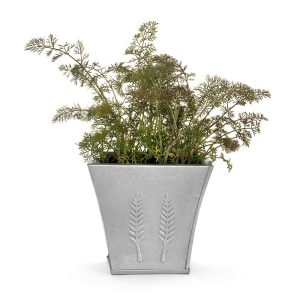Description
Introducing Agapanthus ‘Fireworks’ – a dazzling and fiery herbaceous perennial that will add a burst of color and excitement to any garden. This show-stopping plant boasts large, globe-shaped clusters of flowers that range in color from deep purple to white, creating a striking and vibrant display that is sure to turn heads. ‘Fireworks’ is not just a feast for the eyes, though. It’s also a low-maintenance and hardy plant that can withstand drought and heat, making it an excellent choice for UK gardens. It prefers full sun to partial shade and well-drained soil, but once established, it can tolerate a wide range of soil types and conditions. To complement ‘Fireworks’, consider pairing it with other purple or blue-flowering plants like Salvia and Veronica. For a more contrasting look, try planting it alongside yellow-flowering plants like Rudbeckia or Achillea. Overall, Agapanthus ‘Fireworks’ is a stunning and fiery plant that will add a burst of energy and vibrancy to any garden, making it an excellent choice for gardeners who crave excitement and drama in their outdoor spaces.
Key Facts
- Common Name(s):Lily of the Nile, African lily ‘Fireworks’
- Hardiness:Half hardy and would benefit from protection through Winter.
- How big will I get? Agapanthus ‘Fireworks’ can grow to a height of 0.6m and a spread of 0.4m.
- Did You Know That:Agapanthus ‘Fireworks’ has been awarded the RHS Award of Garden Merit?
Plant Calendar
A rough guide to how this plant will change through the year.
| Jan | Feb | Mar | Apr | May | June | July | Aug | Sept | Oct | Nov | Dec | |
| Flowering Time |  
|  
|  
| |||||||||
| Foliage Colour |  |
 |
 |
 |
 |
 |
 |
 |
 |
 |
 |
 |
| J | F | M | A | M | J | J | A | S | O | N | D |
 
|  
|  
| |||||||||
 |
 |
 |
 |
 |
 |
 |
 |
 |
 |
 |
 |
Care Guide

Soil Requirements
Agapanthus ‘Fireworks’ prefers soil with good drainage and does not tolerate standing water. This plant can grow in soil with a wide range of pH levels, it is not picky about the pH level of the soil.

Best Position
Agapanthus ‘Fireworks’ prefers a sheltered position and requires full sun to thrive, this consists of more than six hours of direct sunshine per day.

Maintenance
Agapanthus ‘Fireworks’ should be cut back to the ground in Autumn, as the foliage starts to go brown.

Pest, Diseases and Wildlife
Agapanthus ‘Fireworks’ can have problems with slugs and snails, and it tends not to have problems with diseases. It is also known to attract bees and other pollinators. It is toxic to cats, dogs and people.





